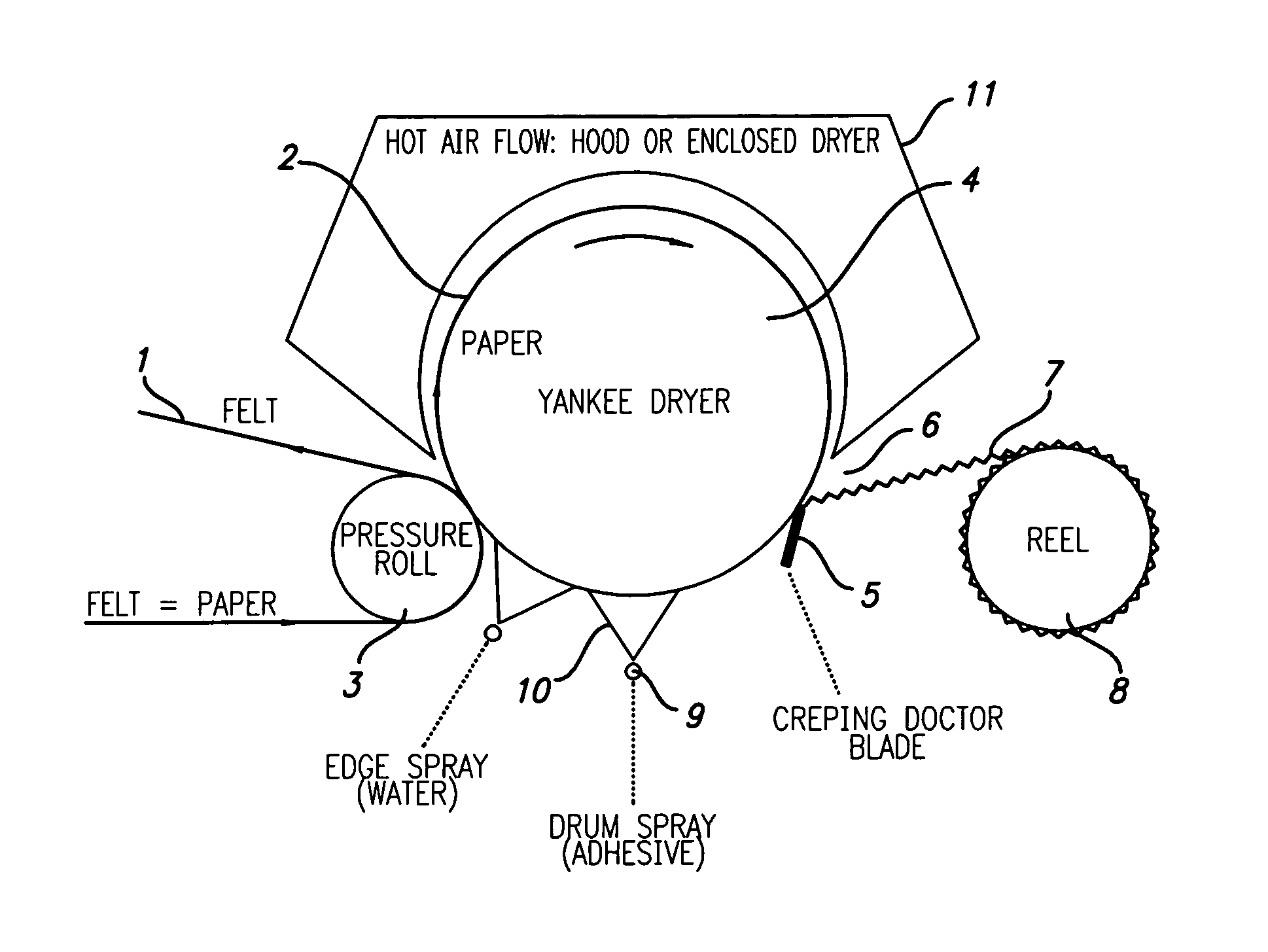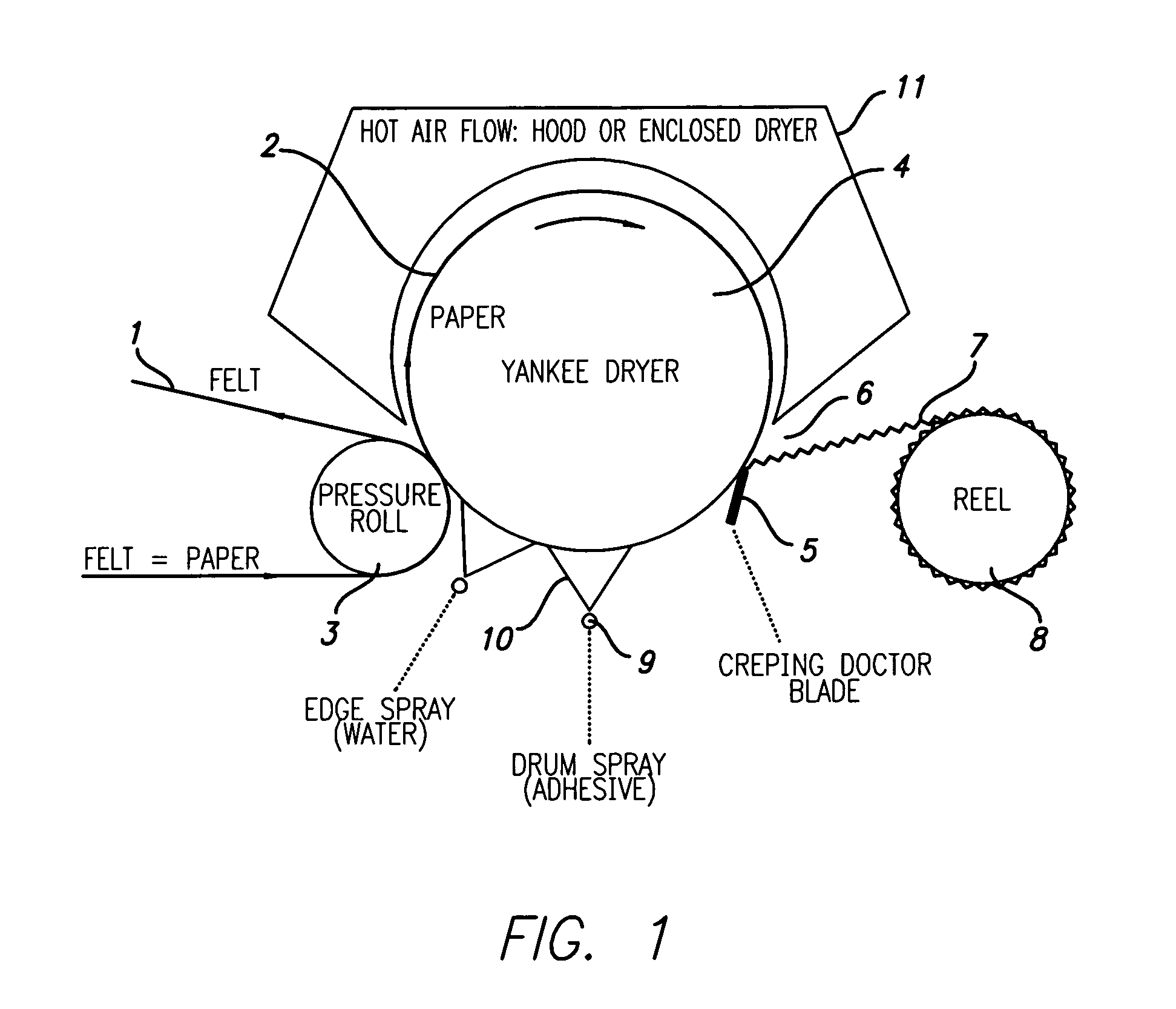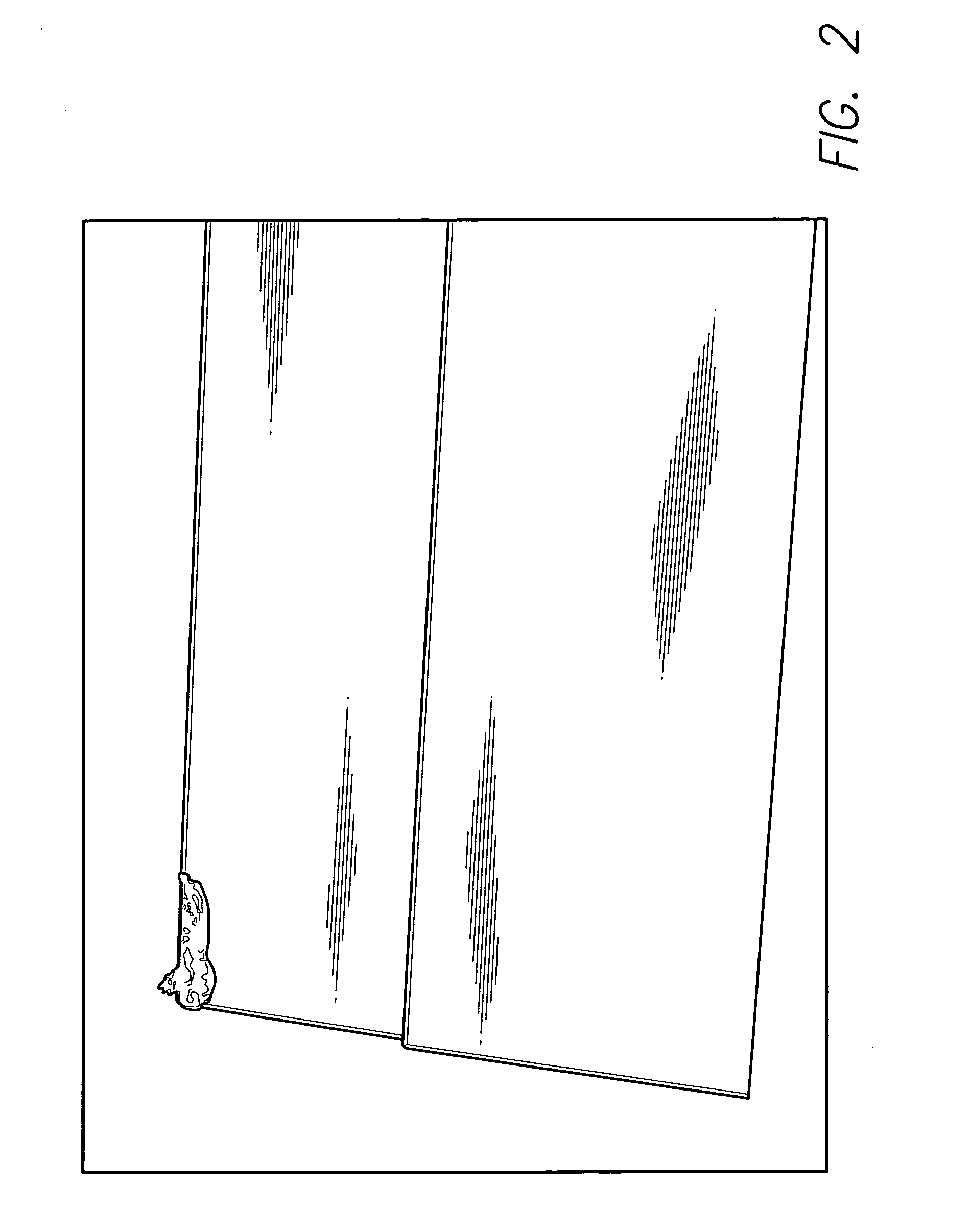Phosphoric acid quenched creping adhesive
a technology of phosphoric acid and creping adhesive, which is applied in the field of polyamideepihalohydrin creping adhesive, can solve the problems of becoming particularly difficult to crep
- Summary
- Abstract
- Description
- Claims
- Application Information
AI Technical Summary
Benefits of technology
Problems solved by technology
Method used
Image
Examples
example 1
Synthesis of Polyamide Prepolymer
[0033]A 2.5 l (2.5 liter) reactor equipped with hot oil bath, stainless steel stirring shaft, agitator, thermometer and a reflux condenser with nitrogen inlet. The reactor condenser was configured for reflux. 990.2242 grams of liquid DETA (diethylenetriamine) were loaded to the reactor at 25° C. and atmospheric pressure. To this was added 1446.0327 grams of solid adipic acid over a 30 minute period in six equal portions with agitation and at atmospheric pressure. The reaction was exothermal, raising the temperature from 40° C. to about 147° C. during the course of adipic acid additions. After the adipic acid load was complete, the reactor condenser was switched from reflux to distillation and heat was applied to raise the reaction temperature to a maximum of 165° C. Water began to distill from the reaction mixture at about 160° C., and heat was supplied to slowly ramp-up the reaction temperature to a maximum temperature of 165° C. Once the desired de...
example 2
Synthesis of Phosphoric Acid Stabilized Crepe Adhesive
[0034]To a 5 l glass reactor equipped with stirring shaft, stainless steel cooling coils, heating mantle, reflux condenser, pH / temperature probe, and equal pressure addition funnel was added 3295.71 grams of polyamide prepolymer from Example 1. To this was added 1372.32 grams of water. The mixture was then heated to 40° C. 23.24 grams of epichlorohydrin was added via addition funnel to the heated mixture in 2 aliquots over a 2 hour period. After addition of the first aliquot of epichlorohydrin the reaction was heated to 90° C. The viscosity of the mixture was monitored with Gardner-Holdt bubble tubes every ten minutes over the 2 hour period. The reaction mixture advanced to a maximum of GH Gardner-Holdt bubble tube viscosity. When the viscosity ceased to advance further with continuous heating at 90° C., the reaction mixture was cooled to 25° C. and 407 grams of 85% phosphoric acid was slowly added to adjust the pH of the mixture...
example 3
Synthesis of Prior Art Sulfuric Acid Stabilized Crepe Adhesive
[0035]To a 2.5 l glass reactor equipped with stirring shaft, stainless steel cooling coils, heating mantle, reflux condenser, pH / temperature probe, and equal pressure addition funnel was added 1647.86 grams of polyamide prepolymer from Example 1. To this was added 686.16 grams of water. The mixture was then heated to 40° C. 14.32 grams of epichlorohydrin, was added via addition funnel to the heated mixture in 3 aliquots over a 2 hour period. After addition of the first aliquot of epichlorohydrin the reaction was heated to 90° C. The viscosity of the mixture was monitored with Gardner-Holdt bubble tubes every ten minutes over the 2 hour period. The reaction mixture advanced to a maximum of GGH Gardner-Holdt bubble tube viscosity. When the viscosity ceased to advance further with continuous heating at 90° C., the reaction mixture was cooled to 25° C. and 116.52 grams of 93% sulfuric acid was slowly added to adjust the pH of...
PUM
| Property | Measurement | Unit |
|---|---|---|
| diameter | aaaaa | aaaaa |
| temperature | aaaaa | aaaaa |
| temperature | aaaaa | aaaaa |
Abstract
Description
Claims
Application Information
 Login to View More
Login to View More - R&D
- Intellectual Property
- Life Sciences
- Materials
- Tech Scout
- Unparalleled Data Quality
- Higher Quality Content
- 60% Fewer Hallucinations
Browse by: Latest US Patents, China's latest patents, Technical Efficacy Thesaurus, Application Domain, Technology Topic, Popular Technical Reports.
© 2025 PatSnap. All rights reserved.Legal|Privacy policy|Modern Slavery Act Transparency Statement|Sitemap|About US| Contact US: help@patsnap.com



